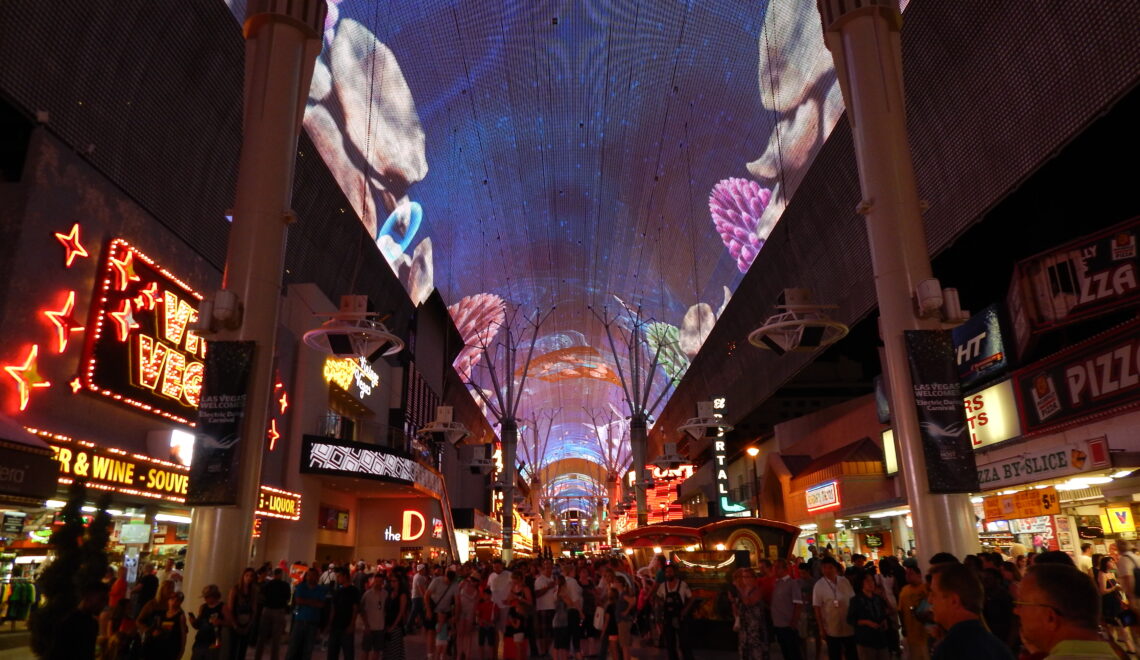Yesterday, I departed from Lake Toba for a marathon 15-hour drive on the Trans-Sumatran Highway from Parapat to Bukittinggi. At around 11 pm, a minivan departed from the port town, carrying three other passengers. Anticipating a challenging journey, I was aware that traveling by road from Parapat was the only available option.
An Unexpected Road
The Trans-Sumatran Highway, leading from Parapat to Bukittinggi, might sound grand, but in reality, it’s far from being a typical highway. Its dimensions are more reminiscent of a Dutch bicycle path than a standard Western-country highway. It became immediately apparent that this road hasn’t seen maintenance in quite a while. Winding roads and numerous potholes characterized the route, making the journey quite arduous.
Thanks to the internet and my Lonely Planet guide, I was well aware of what lay ahead. Yesterday, I boarded the minivan and settled into the backseat. I shared the van with three Indonesian nationals—a couple and another gentleman. I considered myself fortunate for the extra space in the back; no one occupied the seat next to me. Despite the absence of seat belts, which I found unsettling, my experiences with rides in Malaysia had taught me to trust the driver. To be fair, our driver exhibited excellent driving skills during our journey on the Trans-Sumatran Highway
Upon entering the car, I kicked off my shoes and powered up my mobile phone to tune into some music. I stretched out on the backseat in a fetal position. After about fifteen minutes, I sensed some vibrations and removed my earphones. The driver cranked up the volume, blasting Indonesian music. While not displeasing, the couple in front of me seemed weary.
A Bumpy Ride
By 11:15, fatigue began to set in for me as well, but the booming music thwarted any attempt to doze off. The car’s volume was so overpowering that even my regular songs on the phone, along with my noise reduction in-earphones, couldn’t compete. Resorting to some metal, I turned up System of a Down to the maximum volume, and surprisingly, it did the trick—I managed to fall asleep for a few hours.
As I mentioned, the road was in dreadful condition, but the driver demonstrated exceptional driving skills. I felt secure and at ease whenever he maintained a speed of around 100 kilometers per hour. During these moments, the car remained stable, without any vibrations. However, each time he abruptly slowed down to a minimum of 5 kilometers per hour, I instinctively braced myself. The car would jolt up and down, and lying on the couch, I would be lifted off by ten centimeters. After a few head bumps, I realized I had to grab onto something whenever we encountered those rough stretches of road.
During the journey along the Trans-Sumatran Highway, we made four pit stops at tiny eateries, but the restroom conditions were atrocious. Although I neglected to take a picture, the memory of one particular toilet remains vivid. Nestled in an outdoor shed, entering it felt like stepping onto the set of a horror movie. The toilet was a disconcerting sight, with spider webs, litter, decaying wood, and a mandi filled with foul black water. The toilet’s porcelain had shattered, exposing a rusted pipeline. The stench was beyond description.
Arrival at Bukittinggi
I reached Bukittinggi at approximately 2 pm and checked into the Asia Hotel. It was a great feeling to finally walk around after a rough journey along the Trans-Sumatran Highway. Unfortunately, the Asia Hotel didn’t offer WiFi, which was a must for me as I planned to surprise a friend with a Skype call for his birthday celebration back in Holland. Consequently, I left and ventured to the main street of Bukittinggi, Jalan Yani, trying several hotels, but none had WiFi. Seeking recommendations, I was directed to Lima’s Hotel, which seemed promising. Despite the hefty room charge for one night, I decided to go for it. After settling in, I headed out to explore Bukittinggi’s center. My goal was to visit Hello Guesthouse and make a reservation, but I couldn’t locate it. Eventually, I discovered that I had been given incorrect directions.
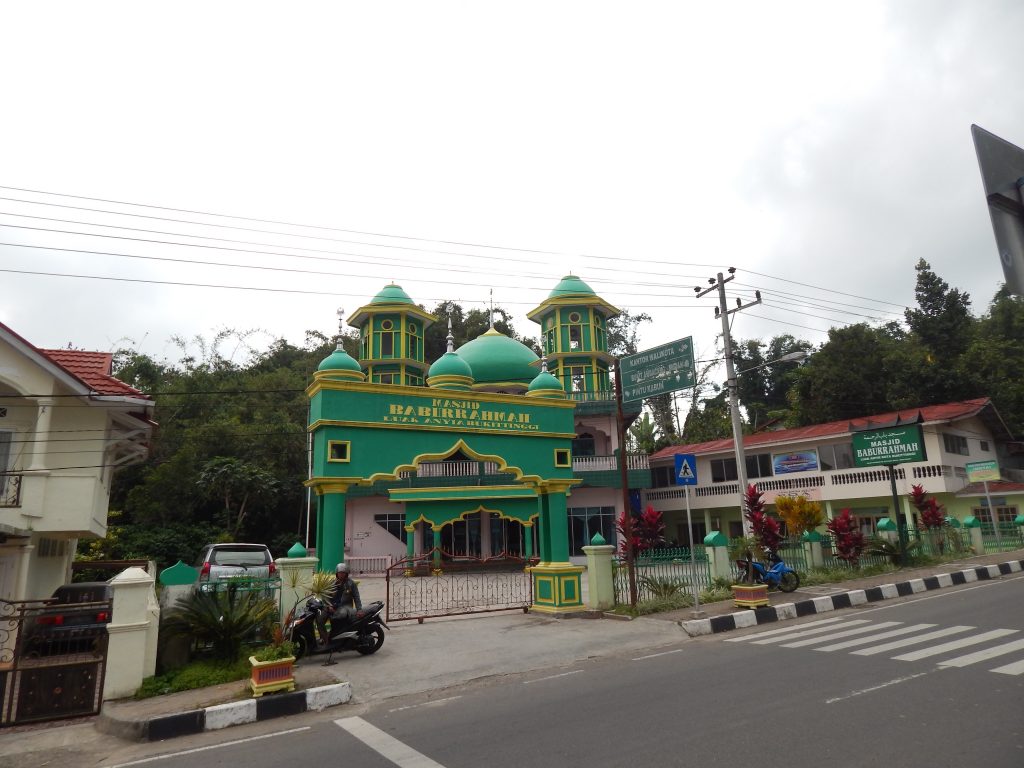
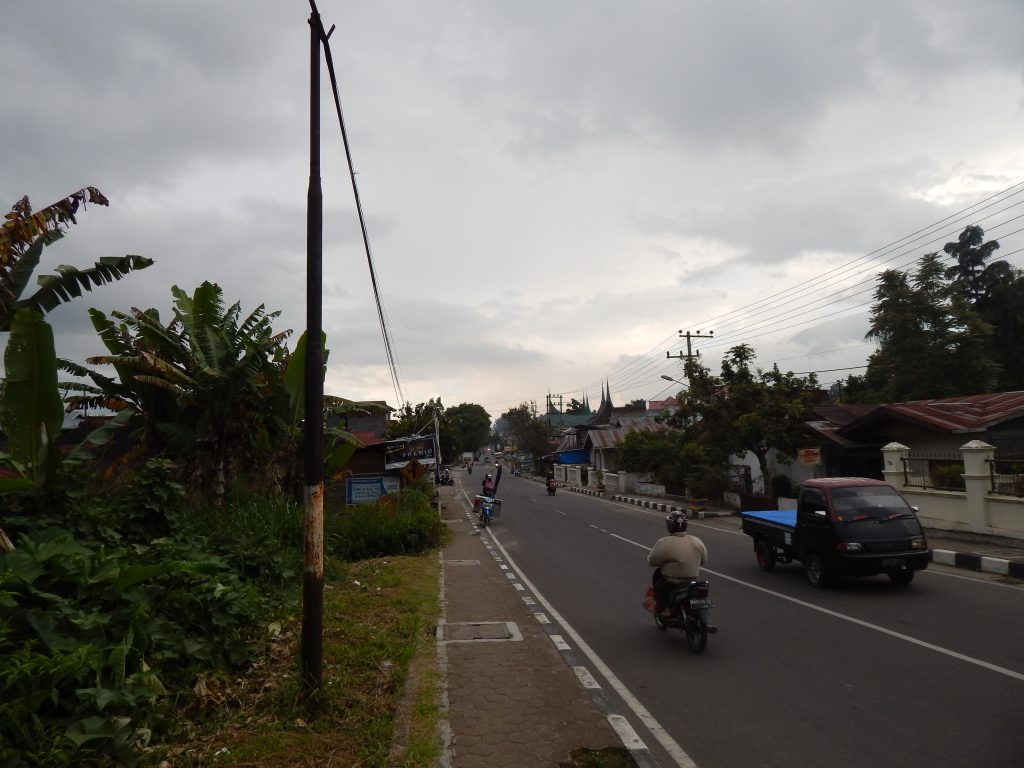
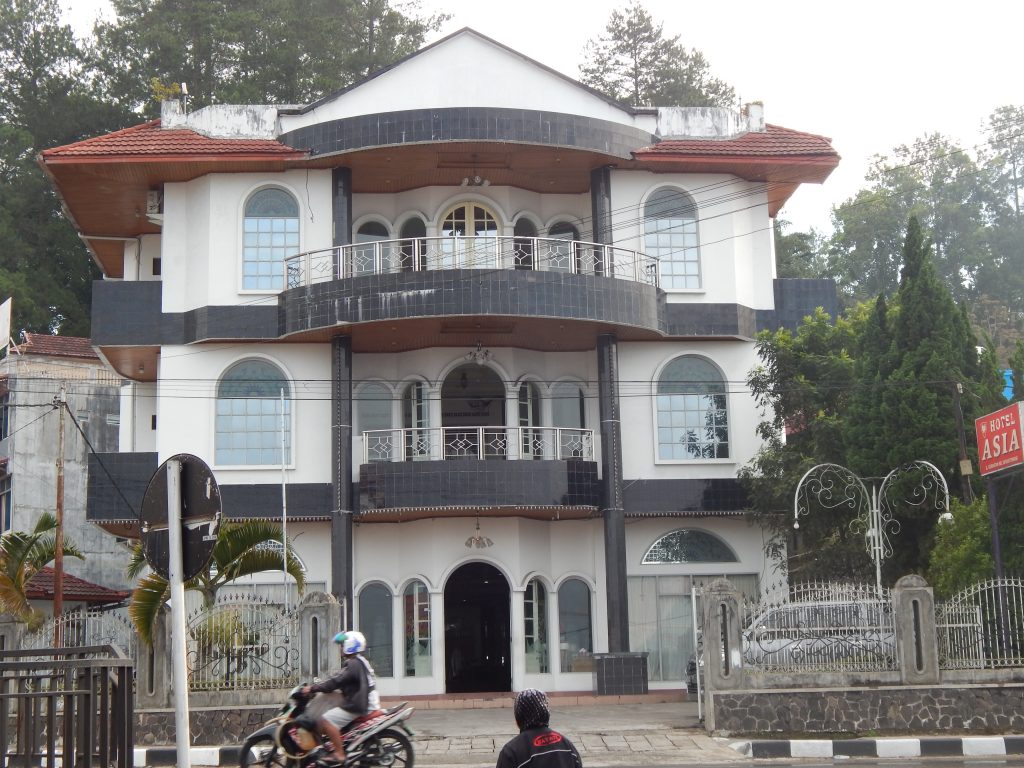
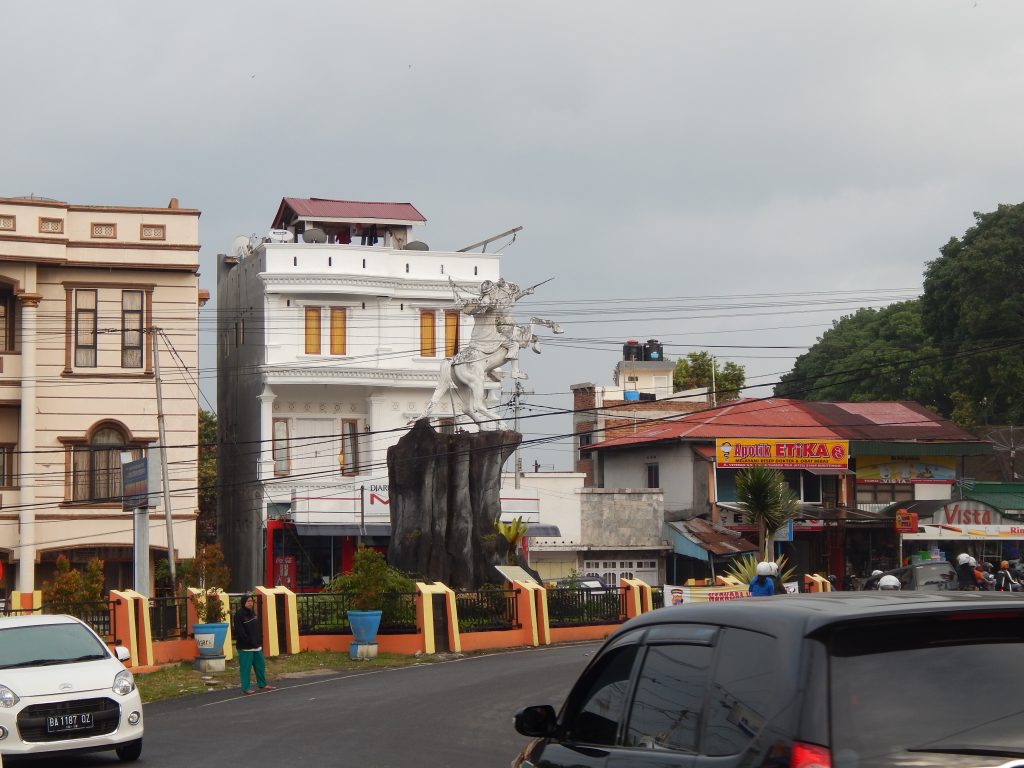
Strolling through Bukittinggi was a pleasant experience, with many friendly people warmly greeting me with phrases like ‘Hello Mister!’, ‘Hey mister!’, and ‘Where you from?’. It felt wonderful to explore a new environment surrounded by such welcoming individuals. However, despite the positive atmosphere, I struggled to locate the guesthouse I was searching for.
Directions to Hello Guesthouse
Seeking assistance, I approached a woman who greeted me kindly, and she went inside to call her husband. Although she couldn’t speak English, her husband could, and he was eager to assist. Uncertain about the guesthouse’s location, he kindly offered to take me there on his moped after I pointed to the place on the map. Estimating it to be just a 5-minute walk, I declined his generous offer, appreciating the kindness of the locals. After 20 minutes of unsuccessful searching, I decided to return to my hotel, where I could search for the correct address, take a break, and jot down some notes.
In the evening, armed with accurate directions, I sought out the guesthouse, discovering it tucked just behind the main street—a mere ten-minute walk from my hotel. Upon inquiring about a room for the following day, I learned they were fully booked. However, they did have a dorm available, so I expressed interest in checking it out. Although the dorm was somewhat basic, featuring mattresses on the floor, everything was impeccably clean and well-organized, prompting me to accept the arrangement. Post-decision, I dined at a restaurant adjacent to the guesthouse. To my surprise, the tacos I ordered were substituted with a substantial spring roll. Given my upset stomach, the fried dish turned out to be a more suitable meal anyway.
Jam Gadang
After that, I opted to take a stroll and found myself at the prominent clock known as Jam Gadang. This structure was constructed to house a clock gifted by the Dutch queen Wilhelmina in 1920. Initially, the tower’s roof exhibited a Dutch design, but during the Japanese occupation of Indonesia in World War II, it was altered to meet their standards. Following Indonesia’s independence, the roof underwent another transformation, adopting the local Minangkabau style. Minangkabau is just one of the many rich cultures in Sumatra, Indonesia. Check out this interesting map that illustrates the diverse cultures across Sumatra.
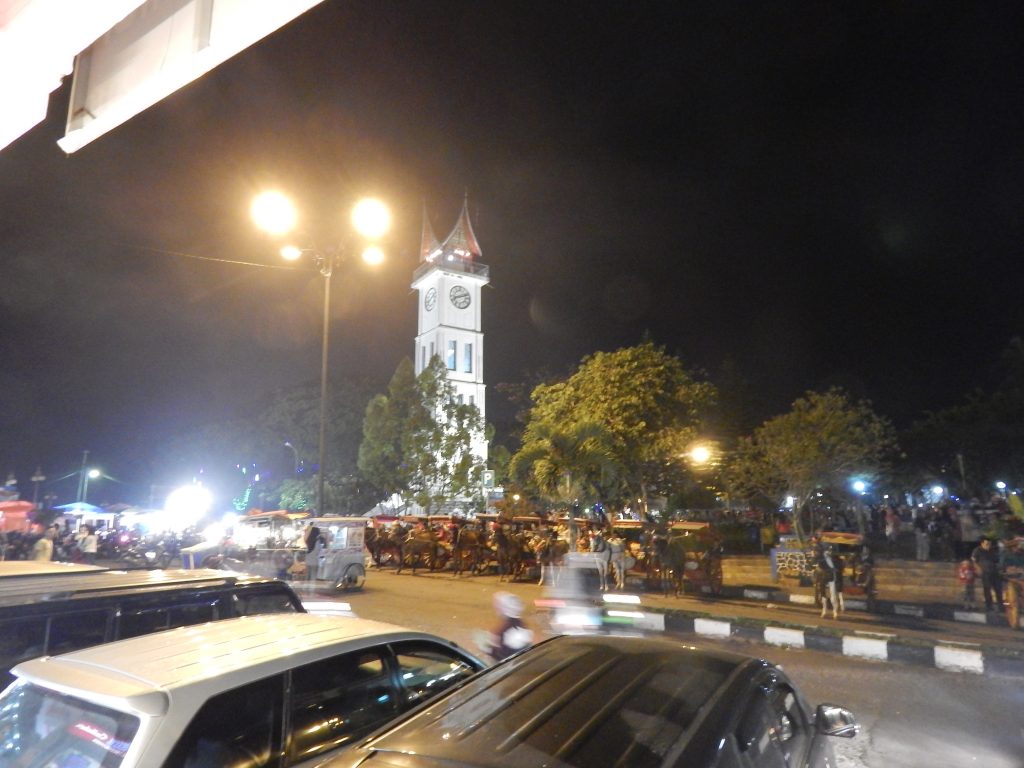
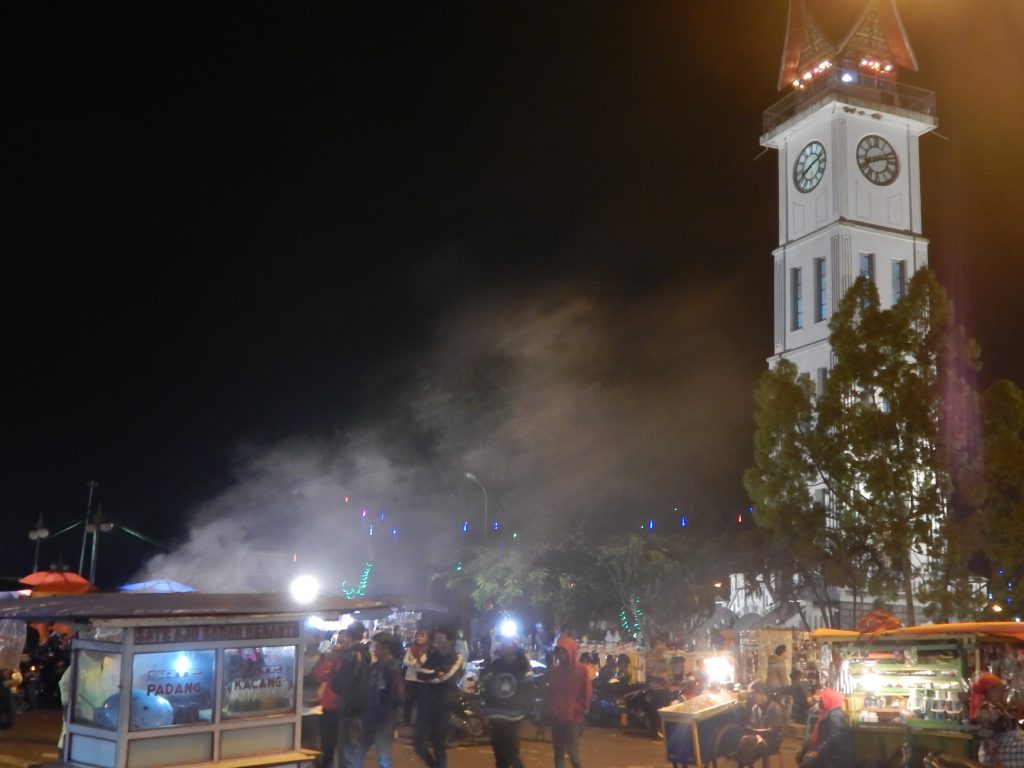
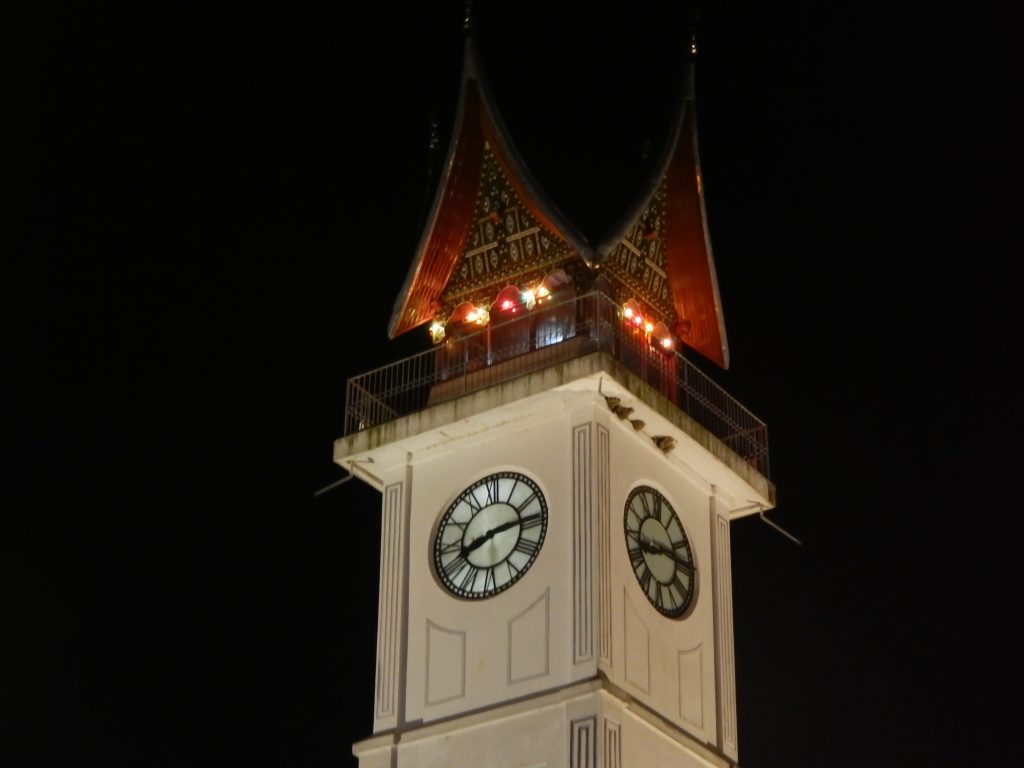
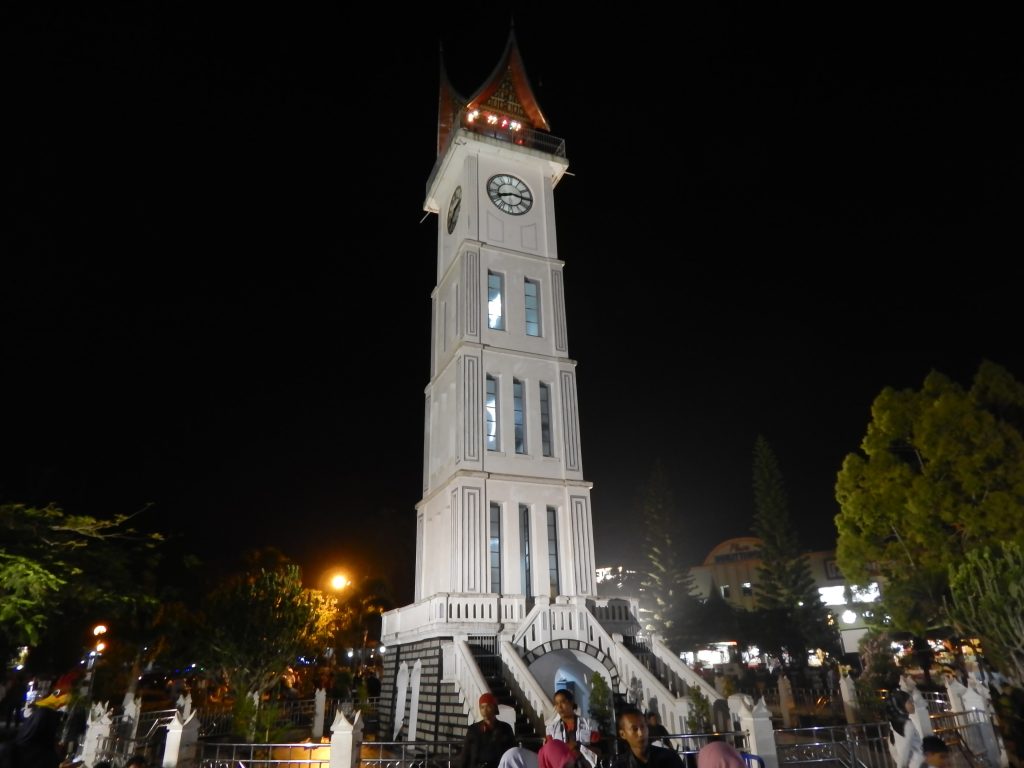
In front of the landmark, a small market was set up. I decided to browse the many stalls but saw nothing special to buy. After a while, I returned to my hotel and made some final pictures of the bridge over crossing the Jalan Yani street. I decided to go there tomorrow, a Dutch fort was up there.
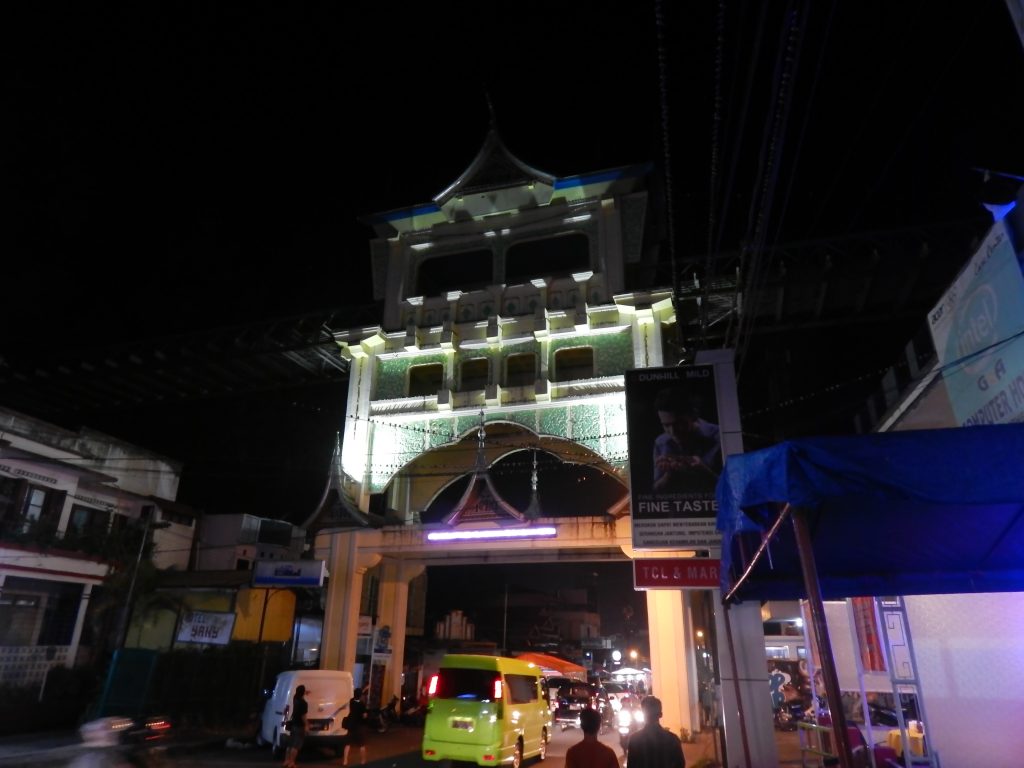
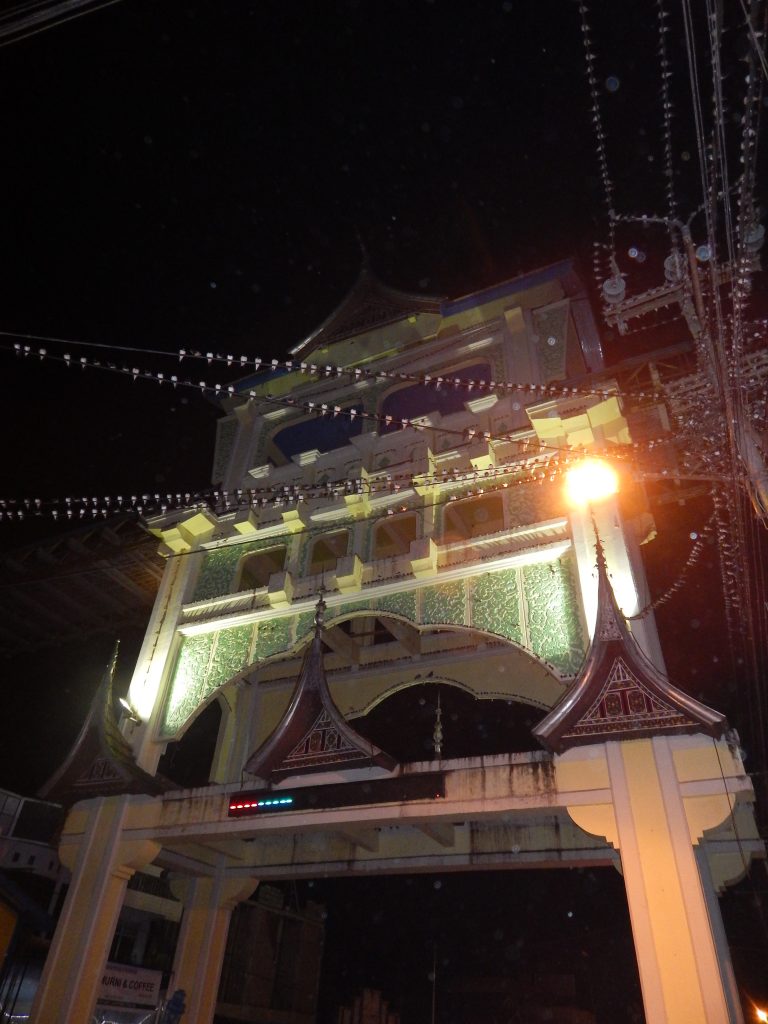
Returning to my hotel, I continued typing reports on my laptop and browsed the internet for information. Tomorrow promised to be both enjoyable and eventful, with some significant plans in store. Opting for an early bedtime, I planned to surprise my friend in the Netherlands with a Skype conversation at 4:45 am.

